
-
![Cathedral of Barcelona]() Provided by: Héctor J. Rivas/Unsplash
Provided by: Héctor J. Rivas/Unsplash

Our travel guides are free to read and explore online. If you want to get your own copy, the full travel guide for this destination is available to you offline* to bring along anywhere or print for your trip.
*this will be downloaded as a PDF.Price
€4,95
Cathedral of Barcelona
The guide was updated:The Cathedral of the Holy Cross and Santa Eulàlia, or simply the Barcelona Cathedral, is the Gothic cathedral and seat of the Archbishop of Barcelona. Its construction began in 1298 on the site of an ancient Roman temple and took more than 150 years to be completed.
Located in the centre of the historic Gothic Quarter of Barcelona, the cathedral is dedicated to the martyr Santa Eulàlia – the patron saint of Barcelona – who was tortured to death in late Roman times. Her corpse is buried under the main altar.
Be sure to climb to the roof for a nice view of the city, and don't forget to visit the serene and beautiful courtyard, which is occupied by thirteen white geese representing the years of Saint Eulalia's life before she was martyred.
Useful Information
- Address: Pla de la Seu s/n, Barcelona
- Opening hours: Mon–Fri 8am–12:45pm / 1pm–5:30pm / 5:45–7:30pm; Sat 8am–12:45pm / 1pm–5pm / 5:15pm–8pm; Sun 8am–1:45pm / 2pm–5pm / 5:15pm–8pm
- Website: www.catedralbcn.org/index.php?lang=en
- Public Transport: Metro stop: Jaume I
- Phone: +34 933 15 15 54
- Email: info@catedralbcn.org
Digital Travel Guide Download
Our travel guides are free to read and explore online. If you want to get your own copy, the full travel guide for this destination is available to you offline* to bring along anywhere or print for your trip.
*this will be downloaded as a PDF.Price
€4,95

Antoni Gaudi's ambitious project remains, as of today, unfinished, which by no means takes away its massive popularity, receiving nearly 4.5 million visitors every year.
The Basílica de la Sagrada Família, or simply La Sagrada Família, is a large unfinished Roman Catholic minor basilica, considered the best example of Modernist architecture. Meticulously crafted to embody the Christian faith through composition, sculpture, and individualistic, offbeat design, this masterpiece is the kind of attraction that has to be experienced to be believed. Guided and audio tours are available in several languages.
Bookable
Read more
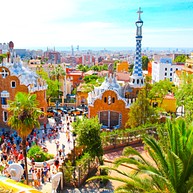
Park Güell
Park Güell is one of the most impressive public parks in the world, a complex garden with architectural elements situated on a hill in the Gràcia district. In this park with stunning views over the city, you can admire several impeccable works of Gaudí. Actually, the entire park was designed by the artist himself. Statues and buildings in different colours and shapes stand side by side, and the park is listed as a UNESCO World Heritage Site.
Bookable
Read more
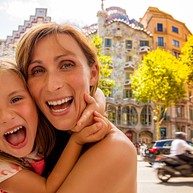
Casa Batlló
Once Gaudi got his hands on this previously unremarkable building in Passeig de Gràcia, it was never to be simply passed by again. Fascinatingly idiosyncratic and almost beast-like on the outside, it continues to amaze from within, with twisted lines and elements that could only be thought up by the genius of Gaudi.
Bookable
Read more
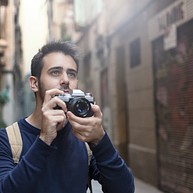
Casa Milà — La Pedrera
Built between 1906 and 1912, Casa Milà, commonly known as La Pedrera ("The stone quarry") is a modernist building in Passeig de Gràcia and the last private residence designed by Catalan architect Antoni Gaudí.
Its interior is even more striking than its wrought-iron, stone-carved facade, especially the rooms displaying where people actually lived. So get inside Casa Milà to discover another one of Gaudí's unconventional architectural creations.
Bookable
Read more
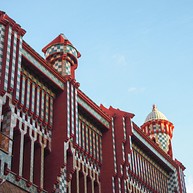
Casa Vicens
The more recent of Gaudí's many projects to be opened to the public is the Casa Vicens. Built between 1883 and 1885 and declared a World Heritage Site by UNESCO in 2005, Casa Vicens was the first house designed by Catalan architect Antoni Gaudí. Situated in the bohemian district of Gràcia, this bold project, commissioned as a summer house, combines elements of nature into a chaotic yet peaceful retreat.
Bookable
Read more
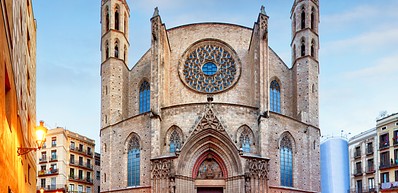
Basilica de Santa Maria del Mar
One of Barcelona's most beautiful churches is probably the best existing example of Catalonian Gothic, with a cleaner style than what is normally associated with Gothic architecture.
Construction of the Basilica of Santa Maria del Mar began in 1329 and finished in 1383, a record time considering this type of construction. The church has an incredible feeling of spaciousness and weightlessness emphasized by slender pillars and very sparsely decorated chapels.
Three naves of the same height, supported by very tall pillars, are the main features of the structure. The splendid rose window on the main façade allows for the illumination of the church together with the beautiful stained glass windows.
Read more
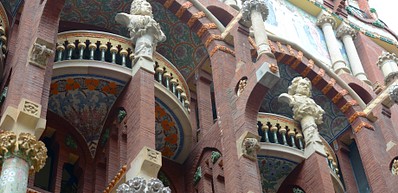
Palau de la Música Catalana
This sublime concert hall designed by Lluís Domènech i Montaner and built between 1905 and 1908 is not quite as wacky as some of Gaudí's architecture, but it is still equally impressive. The Palace of Catalan Music not only pays tribute to the musical heritage of the Catalans but to all music, as well as beauty, colour, and joy.
Bookable
Read more

Cathedral of Barcelona
The Cathedral of the Holy Cross and Santa Eulàlia, or simply the Barcelona Cathedral, is the Gothic cathedral and seat of the Archbishop of Barcelona. Its construction began in 1298 on the site of an ancient Roman temple and took more than 150 years to be completed.
Located in the centre of the historic Gothic Quarter of Barcelona, the cathedral is dedicated to the martyr Santa Eulàlia – the patron saint of Barcelona – who was tortured to death in late Roman times. Her corpse is buried under the main altar.
Be sure to climb to the roof for a nice view of the city, and don't forget to visit the serene and beautiful courtyard, which is occupied by thirteen white geese representing the years of Saint Eulalia's life before she was martyred.
Read more
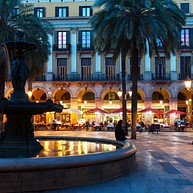
Plaça Reial
Plaça Reial, a beautiful square in the Gothic Quarter and one of Barcelona's busiest, most vibrant spots (especially so at night), is known for its many outdoor venues, restaurants, and nightclubs. During summertime, it becomes an even more popular meeting place when open-air concerts take place. Stroll around or sit down with a tasty drink at one of the bars and just enjoy the moment.
Read more
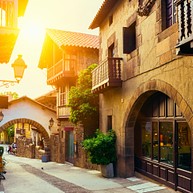
Poble Espanyol
Situated in one of the most emblematic areas of Barcelona, within walking distance from the Montjuïc Fountains, Poble Espanyol reveals the essence of Spanish culture where history meets culture and leisure through a pleasant and quiet open-air walk.
With the mission of representing the essence of life in the towns of Spain, Poble Espanyol boasts more than 100 full-scale architectural constructions, buildings, squares, and streets from various areas of the country spread out through its more than 40,000 m2 of outdoor enclosure.
Take a stroll around Poble Espanyol to discover a variety of restaurant offers with typical products of Spanish gastronomy, shops where you can buy local products, and audiovisual spaces representative of different peninsular areas. At the Fran Daurel Museum, you can admire works by great artists such as Miró, Picasso, Dalí, and many others under the same roof, plus a Sculpture Garden, a space where nature and art merge in one.
Poble Espanyol is also synonymous with craftsmanship, a sustainable, quality, local, and handmade art. Declared in 2003 as an Artisan Zone by the Generalitat of Catalonia, it is undoubtedly one of the best concentrations of crafts in Barcelona and the country, offering the possibility of buying or creating a unique, unrepeatable and personalised piece.
Read more


